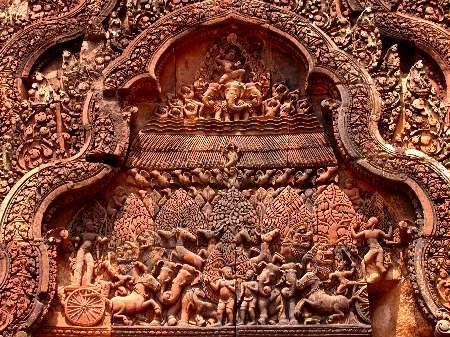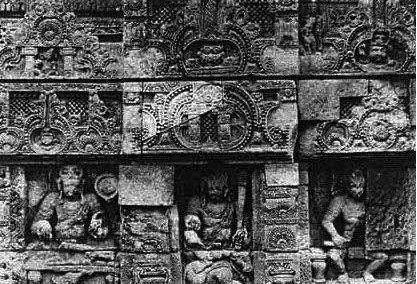
| VARUN, VED AND ZOROASTRIANISM Chapter - 3
We have seen in the earlier parts that Varun of the Rig Ved was a highly venerated god. He was hailed as the sole sovereign sky-god; the powerful Asura, the King of both men and gods, and of all that exists. He governed the laws of nature as also the ethical conduct of men. He is very often described as the saviour in times of peril and distress; one who liberates from sin; the merciful god as well as the punisher of the sinners. He is connected with the symbolic waters of creation from which the manifest world emerges.
Let’s see how Varun fares in the other Vedic texts, and in the epics- Mahabharata and Ramayana – as also in the Purans.
F. Varun in Yajur Ved :
36.1. Varun continues to occupy an exalted position even in the Yajur Ved. There are however no references to his sovereignty as the sky-god. Varun in Yajur Ved, essentially, is the governor of Rta the order in nature and in the moral conduct among men. He judges, punishes as also pardons the wrongdoers. He is also related to the primeval waters (mahat salilam) which have mystical connotations.
The lord of physicians :
36.2. In the Yajur Ved, Varun is related to the beneficial life-giving and lifesaving herbs (oushadha) which depend on water for their existence and growth. Varun appears not merely as the god of waters but also as the physician (maha- bheshaja) and the lord of physicians (Varunm bheshajam patim – YV. 21.40; MS_3,11.2). The herbs Osadhayah come from waters, and Varun protects the waters as also the herbs. As the lord of waters and of the herbs Varun the physician becomes a revered deity in AyurVed the science of life.
The child of the waters :
36.3. Yajur Ved mentions that the waters with which Varun is connected are the waters of the atmosphere. These waters are described as Apah, Maha-salilam the great waters which denote primeval matter from which the manifest world emerges. Aditi the great mother of all gods is also said to give birth to the manifest world. Aditi is thus equated with Apah. As Apah, Aditi is the creative energy which is active (YV.10.7).That is, Aditi the mother of all gods is Prakrti and Shakthi the manifesting or the creative power. The notion of her divinity rests upon her power as a woman, a womb or a mother to give birth to and to bring forth life and existence.
Varun (son of Aditi) who resides among these waters (Apah) is therefore called the child of the waters (Apam shishu) in the best of mothers. It is explained; the expression ‘best of mothers’ refers to the protective and nourishing nature of the waters as mothers. They are the gracious guides and protective mothers; and, Varun is their child.
[It is also said; since Varun dwells in waters he was also called Apam Napat (Apam = water; Napat = fire), ‘Son of the Waters’ (RV.1.22.06). Apam Napat is also referred to as the embryo (garbha) of the waters (apa? garbha? prasva a vivesa– RV.7.9.3). It is said; the sun when he sinks into waters – to quench his thirst – becomes Varun the fire in the waters (Apam Napat).
It is believed; the clan of the Bhrigus were the first to introduce the fire-ritual and the Soma-ritual; and were also the first to discover the nexus between fire and water (Apam Napat).The Bhrigus were associated with water as also fire. And, Varun was the supreme deity of the Bhrigus.
Apam Napat, both in Sanskrit and Avestan, also means ‘grandson of waters’. Pra-napat in the Rig-Ved (napat pra?apat ku??apayya?– RV. 8. 17. 13) denotes ‘great-grandson.’(so apa? napad anabhimlatavar?o ‘nyasyeveha tanva vive?a– R V. 2. 35.13).
It might also mean the fire that is produced when lightning strikes the earth. Let’s say; Clouds (water) –Here, it perhaps, specifically refers to the lightening: The grandson of the waters has descended to this earth in the form of a different fire. > lightening -> fire; then lightening is the son of water and fire (Agni) is the grandson of water.
Otherwise, the term Apama Napat normally refers to Agni who dwells in the water (RV: 10.45.1). It is said; Agni riding on a horse rose from the depths of waters where he resides. He is thus Apam Napat, the son of the waters.
Agni as Apam Napat is celebrated in one entire hymn (RV: 2.35.6). He is described as: “Brilliant and youthful; he shines without fuel in the waters which surround and nourish him. Clothed in lightning, he is golden in form, appearance, and color. Standing in the highest place, he always shines with undimmed splendor. Steeds, swift as thought, carry the Son of Waters”: asvasyatra janimasya ca svar druho ri?a? samp?ca? pahi surin | amasu pur?u paro apram??ya? naratayo vi nasan nan?tani ||]
In the Yajna :
36.4. Yajur Ved is the book of Yajnas. During an Yajna, Varun along with Mitra is invoked and invited to take seat on the North side of the altar Yajna-vedi and requested to protect Rta the law of nature ; and also to bring good rains (YV. 2.3; 2.16). The invitation to Varun to occupy the seat on the North is interesting. North is the direction of the gods; it is the direction of Soma initially (as per Brih. Upanishad) and then of Kubera the sub-divine who is friendly with gods. Thus, in Yajur Ved, Varun was still the major god of the Yajna. In the later texts Varun was, however, assigned a seat on the West where the sun sinks into sea and into the night.
Rta in everyday life :
36.5. Rta in the Rig Ved generally meant the order in the universe. Yajur Ved gives that principle a practical form, the one that could be applied in the everyday world of men. It says, in heavens Rta could very well be the cosmic order, but on earth Rta means the social, ethical, religious and such other laws that govern him. Yajur Ved warns, the violation of these laws would bring the wrath of Varun and his noose. Varun the abstract god of sky and Rta thus takes a practical shape, especially when misery befalls unseen. He is therefore invoked constantly to save erring men from his noose. “Keep us away from nirrti (the fall from the Rta); deliver us from the sin that we have committed”
His three-fold noose :
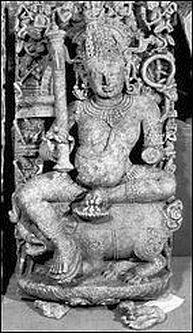
36.6. Varun is said to hold a three-fold noose to bind those who sin (enah). The three bonds of that noose are commonly understood as the three-fold misery (taapa –traya) or the bonds that restrict a man in three planes: physical, vital and mental.
But, Yajur Ved, in fact, employs the metaphors of the heavens, the waters and the ocean. It says Varun has three bonds in heaven (trini ta ahurdivi); three in waters (trinyapsu) and three within the ocean (trinyantah samudre) – (YV.29.15). Many scholars right from Sri Sayanacharya have provided explanations to these mystical metaphors. [I am not quite clear about these interpretations. Let me leave it at that, for now. Sorry.]
G. Varun in Atharva Ved :
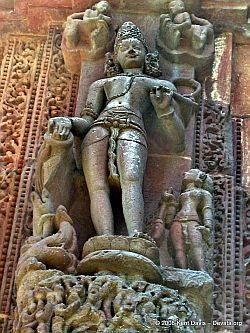
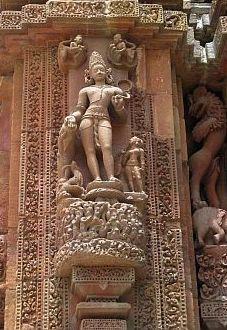 37.1. Atharva Ved, the main text of the Bhrigus, has a special relation with Varun. Here he is venerated as an aspect of the Supreme: ”He is Varun, He is Agni; He is Mitra; He is Savitr” (AV.13.3.13) . In its philosophical discussions, Varun is treated as a manifestation of Brahman.
sa varu?a? sayam agnir bhavati sa mitro bhavati pratar udyan | sa savita bhutvantarik?e?a yati sa indro bhutva tapati madhyato divam |tasya devasya kruddhasyaitad ago ya eva? vidva?sa? brahma?a? jinati |AV.13.3.13).
The Atharva Ved does not seem to dwell much on Varna’s sovereignty over the sky or his control over Rta the order in the universe. Yet, the position of Varun in Atharva Ved continues be exalted.
The king who judges and pardons :
37.2. Varun of Atharva Ved is also the king who watches over the world, punishes the guilty; and forgives the sins of those who implore his pardon.
The king Varun (Varunsya Rajnah) is greeted with respect (Namaste Raajan) – (namas te rajan varu?astu manyave visva? hy ugra nicike?i drugdham |sahasram anyan pra suvami saka? sata? jivati saradas tavayam ||2|| AV.1.10.1-2). He is Asura the powerful Lord; and is highly celebrated. The king possessed of mystic powers (Maya) is a strict ruler who employs spies to watch over his subjects. He chastises the wrongdoers; and he also pardons those who repent and seek his merciful forgiveness.
Hymns to Varun :
37.3. The hymns in Atharva Ved in praise of Varun ‘the most impressive deity among all the Vedic gods’ are lofty, more devout and ethical in tone. They pray for purity, forgiveness, and release from sins, and for moral strength against sinning further. The hymns rise to a pitch of exaltation as they sing the splendour of Varun. In these hymns Varun, more than any other Vedic god, appears as a mighty and merciful.
Of the many soulful hymns submitted to Varun, the sixteenth hymn in the fourth book of the Atharva Ved (brhann e?am adhi??hata antikad iva pasyati |ya stayan manyate carant sarva? deva ida? vidu? ||1||) sung by sage Vashista celebrating Varun’s power and omniscience is often quoted and hailed by scholars as being among the most devote and forceful hymns in the Vedic literature.
yas tisthati carati yas ca vañcati yo nilayam carati yah pratankam |dvau samnisadya yan mantrayete raja tad Ved Varuns titiyah ||2|| uteyam bhumir Varunsya rajña utasau dyaur brhati dureanta |uto samudrau Varunsya kuksi utasminn alpa udake nilinah ||3||uta yo dyam atisarpat parastan na sa mucyatai Varunsya rajña? |diva spasah pra carantidam asya sahasraksa ati pasyanti bhumim ||4||sarvam tad raja varuno vi caste yad antara rodasi yat parastat |samkhyata asya nimsio jananam aksan iva svaghni ni minoti tani ||5||ye te pasa varu?a saptasapta tredha tisthanti visita rusantah |chinantu sarve anrtam vadantam yah satyavady ati tam srjantu ||6||satena pasair abhi dhehi vaunainam ma te mocy anrtavan nrcaksah |astam jalma udaram sramsayitva kosa ivabandhah parikrtyamanah ||7|| yah samabhyo varuno yo vyabhyo yah samdesyo varuno yo videsyo | yo daivo varuno yas ca manusah ||8||tais tva sarvair abhi syami pasair asav amusyayanamusyah putra | tan u te sarvan anusamdisami ||9||
The gods know all men do, though men would fain their deeds disguise :
Wherever two together plot, and deem they are alone,
His spies descending from the skies glide this entire world around;
The secret winking all he counts of every mortal’s eyes;
(AV.4.16.7-8)
(Translated by J Muir, Original Sanskrit Texts, 1870)
Apam-adhipathi
37.4. While mentioning his connection with waters Varun is referred to as– Apam-adhipathi (varu?o apam adhipati? sa mavatu) the Lord who resides in the primeval waters. These waters are described as of golden hue, pure and purifying; and, they are the material cause for creation (AV.1.33.1-3).
hira?yavar?a? sucaya? pavaka yasu jata? savita yasv agni? |ya agni? garbha? dadhire suvar?as ta na apa? sa? syona bhavantu ||1||yasa? raja varu?o yati madhye satyan?te avapasyan jananam |ya agni? garbha? dadhire suvar?as ta na apa? sa? syona bhavantu ||2||yasa? deva divi k??vanti bhak?a? ya antarik?e bahudha bhavanti |ya agni? garbha? dadhire suvar?as ta na apa? sa? syona bhavantu ||3||
H. Varun in the Brahmanas :
38.1. Brahmanas are the books of rites and rituals. Varun continues to occupy an elevated position even in the Brahmanas. Varun is the deity who presides over the rule or the order in the proper performance of a Yajna. Varun removes the bad elements of the Yajna and protects the auspicious ones (Varunh yajnasya svistam pati– Ait. Brh.38.7.5). Varun is vigilant safeguarding Sathya (truth); and is opposed to an-rta (falsehood). Varun punishes the wrong doers with his knots (granthyah- SB.1.3.1.16).
Offerings to Varun :
38.3. Varun is a very revered god in the Brahmanas. Oblations are offered to Varun respectfully along with other deities. He is offered the seat on the North which, according to Taittereya Brahmana, is the direction of Varun (esa – uttara- Varunsya dik– Tai.Br.
33.8.20.4). This is significant; and is a proof of Varun’s esteemed position in the Brahmanas and among the Devas. (In the later texts Varun is sent west).
Varun is also invoked through an oblation procedure called Varun-praghasa performed at the commencement of the rainy season in the month of Ashada, seeking deliverance from his noose; and for his grace to lead a healthy and faultless life (SB.2.5.3.1). ”Whatever sins we have committed in the village, forest…in the society and in our own self… from all that we rid ourselves.” This was an occasion devoted mainly to confessions and to seeking Varun’s mercy and forgiveness. Whatever be the practices associated with it, the Varun-praghasa is essentially a purity-ritual.
varu?a praghasairvai prajapati? | praja varu?apasatpramuñcatta syanamiva akilvi?a?
In philosophical dialogues :
39.1. In the Brahmanas Varun is celebrated as lord of truth (Gopatha Brh: 1. 1.7); and as one who envelops all existence. The Brahmanas ascribe to Varun every type of law that relates man with God.
39.2. The Brahmanas talk of the mystical or the philosophical nature of Varun through allegories and speculative dialogues.
(i) They mention: the night belongs to Varun (Varun Rahtri) Varun is Rathri (Raathri Varunh) and the black colour belongs to Varun. Varun is also identified with waters (Apah) the primal cause of creation; as also with the vital airs: Apana, Prana and Vyana. And, Varun is Agni too. When Agni burns brightly he then indeed is the purifying Varun (SB 2.3.2.10). That is because, Varun symbolizes the notion of essential purity in life and in nature.
(ii). The Brahmanas, especially the Shatapatha Brahmana (SB) carry elaborate discussions about the relationship that exists between truth (Sathya) and waters. It said; truth is the same as waters for waters are the truth. Hence: ’whereby waters flow that is the form of truth. It is the waters indeed that were first made in the universe. When waters flow everything whatever that exists is produced.”(SB.10.5.4.1). Waters also symbolize the law. Water causes everything to exist and to grow in order. The waters are the reality (SB.7.6.1.4) and represent immortality (Amrtatavam va Apah – SB.1.9.3.7). They are the faith (Shraddaha) in life (Tai.Br.3.2.4.1). All gods and all beings are water; as they are the foundation and the ultimate source of the universe; and everything is contained in them (SB 10.5.4.4.15).
Other identities :
40.1. The Kausatakai Brahmana (18.9) says Sri the symbol of prosperity and beauty belongs to Varun (Sri vai Varunh).
40.2. Varun is also identified with time. All the movements in time and space belong to him; he is time samvathsara (samvathsaro Varunh- SB. 4.4.5.18).
40.3. Jaiminiyopanishad Brahmana identifies Varun with Savita the solar deity. It asks: ’what is Savita?’ what is Savithri?’ Varun is Savita; waters are Savithri.
Varun’s identity with Savitar a solar deity perhaps dates back to the early phase of Rig Ved; and it is interesting. To start with, Varun was one of the solar gods (Adityas) and represented the setting sun; he was also a friend of Aryaman and Mitra another solar god.
Varun and Mitra were invoked together. But, later Varun’s association with lunar gods (Soma, Yama, Rudra etc.) gets stronger as Varun slides away from brightness towards darkness.
40.4.
The Horse (asva) the epitome of vigour, speed and majesty symbolizes
the king and the kingship. Horse is also an emblem of the sun; and,
Varun was one of the solar gods. The horse is thus identified with
Varun and with the power of Asura the king (Varuno vai asvah–
Tai.Br.2.2.5.).The much talked about Rajasuya Yaga which establishes
the unchallenged supremacy of a king is also about establishing
the rule of law in the kingdoms. Since Varun is associated with
the kingship, the horse and upholding the law, it is said, any Rajasuya
performed by any king is, in fact, a dedication to Varun –
the first monarch in the Vedic tradition and the lord of the law
Dharmapati (SB.5.3.3.9).
41.1. Some Brahmanas carry legends concerning Varun. The Aitareya Brahmana narrates the legend of the boy Sunahsepa and the king Harischandra who is punished by the god Varun. This story is also narrated in Purans and other texts with slight modifications.
41.2. Shatapatha Brahmana and Jaiminiya Brahmana narrate stories of great philosophical merit which depict Varun as a very wise sage (not as a god or as a king) who has gained the true understanding of the ultimate reality. In these legends, Varun teaches his son Bhrigu That (tat) by knowing which everything becomes known.
I. Varun in Aranyakas :
42.1. Varun is briefly discussed in the Aitareya Aranyaka at two places; and both refer to Varun’s mystical association with waters.
There are no allusions to his Vedic glory as the sky-god, or as the king or as the governor of the laws.
42.2. The waters referred to in these passages are philosophical suggestions as they denote the primeval waters or the primeval matter. Here, the creation of waters and of Varun comes about as an expression of the Supreme Being’s will or desire. It is metaphorically said that they were born out of the manas the mind of the Supreme Being. Varun is the mythical symbol of primeval matter. Thus, philosophically, waters and Varun stand for Prakrti or the Becoming. It is the first stage of manifest world.
Aitareya Aranyaka (2.1.7) says: “In the beginning One Being was This. There was nothing else blinking. He desired ‘shall I create the worlds ? He created the worlds, water, light and waters”.
Taittareya Aranyaka (1.23) speaks about the dependence of Prakrti on Purusha. “All this That was produced from waters (Prakrti). It needed the support of Purusha. The Atman (Brahman) having manifested itself as the world entered into it”.
J. Varun in Upanishads :
43.1. Upanishads are the fountainhead of philosophical speculations presenting highly idealized metaphysics. It is the idealism of Absolute unity and absence of duality that pervades the Upanishads. In it, the concept of atman outshines all the rest. It questions:” How could there be a creator, a sustainer or a destroyer? How could there be a king when there is no kingdom to be ordained? How could there be a law or an ordainer of law?
The discussions of individual gods are rather a secondary matter in the Upanishads. All deities are absorbed into the One Absolute. Varun does not appear in the Upanishads either as a sky-god, or as the governor of Rta or even as the lord of waters. Varun appears by name in the discussions that take place in the Upanishads at two levels: One, in the philosophical symbolisms as an aspect of the Supreme; and the other in elaborate dialogues as a wise teacher imparting knowledge of Truth.
As an aspect of the Supreme :
43.2. Varun in the Upanishads is mentioned along with other gods; and is identified as an aspect of the Supreme reality, as one “whose abode is water, whose world is the heart, whose light is the mind, and who is the ultimate resort of every being” (Brihad. Upanishad – Sakalya section – 3.9.16).
At the same time, Varun’s Vedic characteristics and his Vedic associations are also retained. When Brahman is addressed as Varun, it is said: “You are Agni, Varun and Vayu…but this manifold existence is for sake of Prakrti (Chan. Up.5.1). It is also said : ” Mitra, Varun along with the meters (pankti), chants (mantra), seasons (ritu),the breaths (udana), the Rishis (Angirasa), the moon and celestial gods all issue forth and enter again into That” ( Maitreyi Up.7.4).
Similarly, Maha-narayano-panishad prays to Varun the remover of sins. Varun is prayed to remove whatever wrong is done by way of thought, speech and deed. And, it also refers to his noose (Mha N Up. 4.12). Similar prayers addressed to Varun appear in some other Upanishads too.
The wise teacher :
43.3. Just as the Brahmanas, the Upanishads too contain dialogues of Varun with his son Bhrigu. These are narrated in detail. For instance, in the most celebrated passages of the Taittereya Upanishad, Bhrigu approaches his father Varun the wise sage to teach him about Brahman (Brighurvai varuni Varunm pitara mupasasara). Varun teaches him about That “from which the food (anna), the vital breath (prana), the eye, the ear, the mind, the speech are born; and, by which, when born they live; and into which they enter and merge” (Tai.Up.2.11).Varun here is a seer of the highest order.
K. Varun in Mahabharat :
Khandava forest fire 44.1. Varun in Mahabharat is no longer the sky god; he is neither a powerful king nor even a judge. His association with the most important aspect Rta the order in the natural world, as also his overseeing ethical aspects of men’s life are glossed over.
Varun in Mahabharata is presented as the son of Aditi the great mother. He is one of the Adityas and he is also one among the guardians of the directions (Lokapala). He is the regent of the west the direction of the setting sun perhaps because of his association with darkness and night. He is also a water-god.
Water-god :
44.2. Varun is associated with waters in Mahabharata too. But, these waters are just plain and simple waters; nothing more. The philosophical connotations of the waters (Apah) and the metaphysical quality of darkness etc, associated with it, as in the Brahmanas, are not even mentioned in the Mahabharata. Here, Varun is Salilesvara the king of all rivers, lakes, local water bodies and ocean.
Varun is described as a water-god who is handsome; and is endowed with the splendour of lapis lazuli (vaidurya bhasayansarvato). He fills all the quarters of the horizon with his brilliance. His home is under the waters (anthah-saliam) in the Nagaloka which is in the heart of the ocean the Samudra (saagaro Varunlayah). There he has a magnificent underwater-palace. Mahabharata (Udyoga Parva- 98) provides an elaborate description of Nagaloka and of Varun’s most splendid underwater dwelling with its myriad palaces, pavilions and assembly halls. Varun attired in shining robes and adorned with sparkling jewels sits on a great throne with his wife Varuni. He is surrounded by all kinds of aquatic creatures and demons, rivers, nagas, daityas and sadhyas etc” (Mhb. Vanaparva. 41.5-6).
Pasa the noose :
44.3. Brief references are made to Varun’s Pasa the noose (in Vanaparva 40.2-29; and in the Kandava – vana episode in Adiparva – 227.31-32) – as Pasabhrt, Ugrapasa, Pasin, Pasavan etc. Pasa, the noose is mentioned merely as one of his ayudhas or adorations; it does not carry the significance it had in the Veds. There are also no references to his authority as a judge or as a king who punishes.
Other references :
44.4. Varun also figures in the episodes of burning down the Kandava forest, presenting Arjuna with deadly weapons and Krishna with the mace Kaumudaki capable of slaying the demons. Earlier in the epic, Varun granted a boon to the king Nala by which Nala could assume any form he wished. Varun also presented him a garland of fragrant flowers.
L. Varun in Ramayana :
45.1. As in Mahabharata even in Ramayana, Varun is just a Dikpala (guardian of a direction) and a water-god Salilaraja. He is said to live in stagnant lakes as also under the sea; and is surrounded by aquatic beings. Earlier in the epic, Varun presents Dasharatha the old king with a set of two mighty bows.
45.2. However later, the hapless Varun invites the wrath of the annoyed and furious Rama who is impatient to cross the sea and march into the Lanka Island to rescue his beloved queen .On his way to Lanka Rama spends three nights on the shores of the ocean waiting for it to calm down and to provide a safe passage to his monkey-army. When the sea does not subside Rama gets furious, draws his most lethal weapon Brahmastra threatening to burn down the sea with all its creatures and other inmates. The frightened sea-god Varun comes out of the waters with folded hands and begs Rama to calm down. The sea subsides and eventually allows Rama’s army to build a stone bridge across the channel to lead up to the Lanka Island.
M. Varun in Purans :
46.1. The portrait of Varun in Purans is similar to that of his in the Mahabharata and Ramayana. Here also he is the regent of the west and the guardian of the water element. He is worshipped for sending down good and timely rains. He is depicted as riding a mythical water-monster (Makara) that resembles a crocodile. Varun furnished with a white umbrella moves on the waters holding a noose.
Varun appears in number of episodes in many Purans; too many to be recounted here. In the Bhagavata Purana, Varun is depicted as abiding by the will of Sri Krishna. He participated in all the battles that Indra fought.
46.2. In the Purans the gods such as Indra and Varun had lost much of their esteem. They are reduced to insignificance; are ill-treated and often humiliated by the powerful and belligerent Asuras. The major gods too chastise them and treat them as minor vassals. Indra in particular has fallen prey to faults and failures such as greed, envy and lust. He is ever anxious; and always in fear of losing his throne. He is scared of not only the villainous but also of the most virtuous as he fears they might displace him as the king of the Devas. He is therefore busy constantly plotting devious schemes to survive and to keep away the possible- contenders to his throne.
46.3. When Indra and Varun are offered worship in the Purans, it is not because they are the gods in heaven but because they are viewed as the reflections of some aspects of Vishnu. That notion was guided by the faith that all gods are verily the manifestations of the One Supreme.
Epithets :
46.4. In the Purans Varun is called by many names such as : Prachetas; Amburaja; Jalapathi; Kesa (all signifying his lordship over water); Uddama (surrounder); Pasabhrta (one who wields the noose); Viloma, Variloma (of watery hair); and Yadahpathi (king of aquatic animals).
In the next part we shall see a bit more closely of Varun’s association with waters as also the explanations for his decline and eventual fall.
References and Sources :
1. Indra and Varuna in Indian Mythology by Dr. UshChoudhuri; Nag Publishers, Delhi, 1981
2. The Indian Theogony by Dr.Sukumari Bhattarcharji, Cambridge University Press, 1970
3. Asura in early Vedic religion by WE Hale; Motilal Banarsidass; Delhi, 1986
4. Goddesses in ancient India by PK Agrawala; Abhinav Publications, New Delhi,1984
5. The Hymns of Atharvan Zarathustra by JM Chatterji; the Parsi Zoroastrian Association, Calcutta, 1967
avesta.org
6. Outlines of Indian Philosophy –Prof M Hiriyanna; Motilal Banarsida ss, Delhi, 2005
7.Original Sanskrit texts on the 0rigin and history of the people of India, their region and institution By J. Muir;Trubner & co., London, 1870
8. A classical dictionary of Hindu mythology and religion, geography, history, and literature byJohn Dowson; Turner & co, Ludgate hill. 1879
9. Vaidika Sahitya Charitre by Dr. NS Anantharangachar; DVK Murthy, Mysore, 1968
10. Sri Brahmiya Chitra Karma sastram by Dr. G. Gnanananda
11. Zarathustra Chapters 1-6 by Ardeshir Mehta; February 1999
Websites :
indiayogi.com
bookrags.com
bookrags.com
hinduweb.org
rashmun.sulekha.com
newworldencyclopedia.org
indiadivine.org
svabhinava.org
en.wikipedia.org
iamronen.com
hummaa.com |
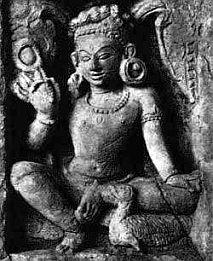
.jpg)
